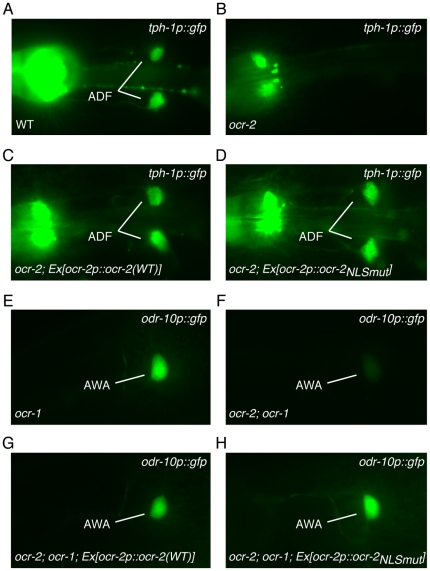Figure 5. OCR-2 regulates expression of tph-1 and odr-10 independently of the NLS.
(A–D) The OCR-2 NLS is not required for tph-1::gfp expression. (A) TPH-1 is a serotonin biosynthetic enzyme and, as previously described [11], a tph-1p::gfp transcriptional reporter is expressed in the ADF and NSM head neurons. The ADF neurons are indicated. The NSM neurons are seen in the left of each panel. (B) OCR-2 has been reported to modulate transcription of tph-1 [11], and ocr-2(ak47) null mutants have reduced expression of tph-1p::gfp in the ADF neurons. Using the ocr-2 promoter, either (C) the wild-type OCR-2 channel (ocr-2p::ocr-2), or (D) the channel in which the basic residues of the NLS had been mutated to alanine (ocr-2p::ocr-2NLSmut), was re-introduced into ocr-2(ak47) mutant animals. Both channels restored tph-1p::gfp expression in ADF. (E-H) The OCR-2 NLS is not required for odr-10::gfp expression. ODR-10 is a G protein-coupled receptor and an odr-10p::gfp transcriptional reporter is expressed solely in the AWA head neurons [5]. (E) Expression of odr-10p::gfp in ocr-1(ak46) null mutants is indistinguishable from wild-type animals (and [5]). (F) ocr-2(ak47);ocr-1(ak46) double mutants have drastically reduced expression of odr-10p::gfp (and [5]). Using the ocr-2 promoter, either (G) the wild-type OCR-2 channel (ocr-2p::ocr-2), or (H) the channel in which the basic residues of the NLS had been mutated to alanine (ocr-2p::ocr-2NLSmut), was re-introduced into ocr-2(ak47);ocr-1(ak46) mutant animals. Both channels restored odr-10p::gfp expression in AWA. ≥2 independent transgenic lines were examined for each construct, n≥40 transgenic animals.

